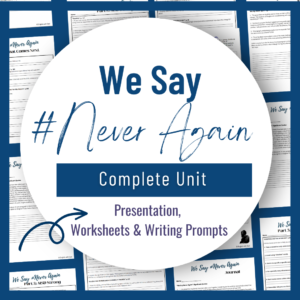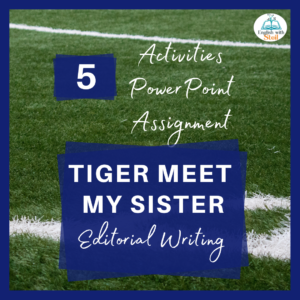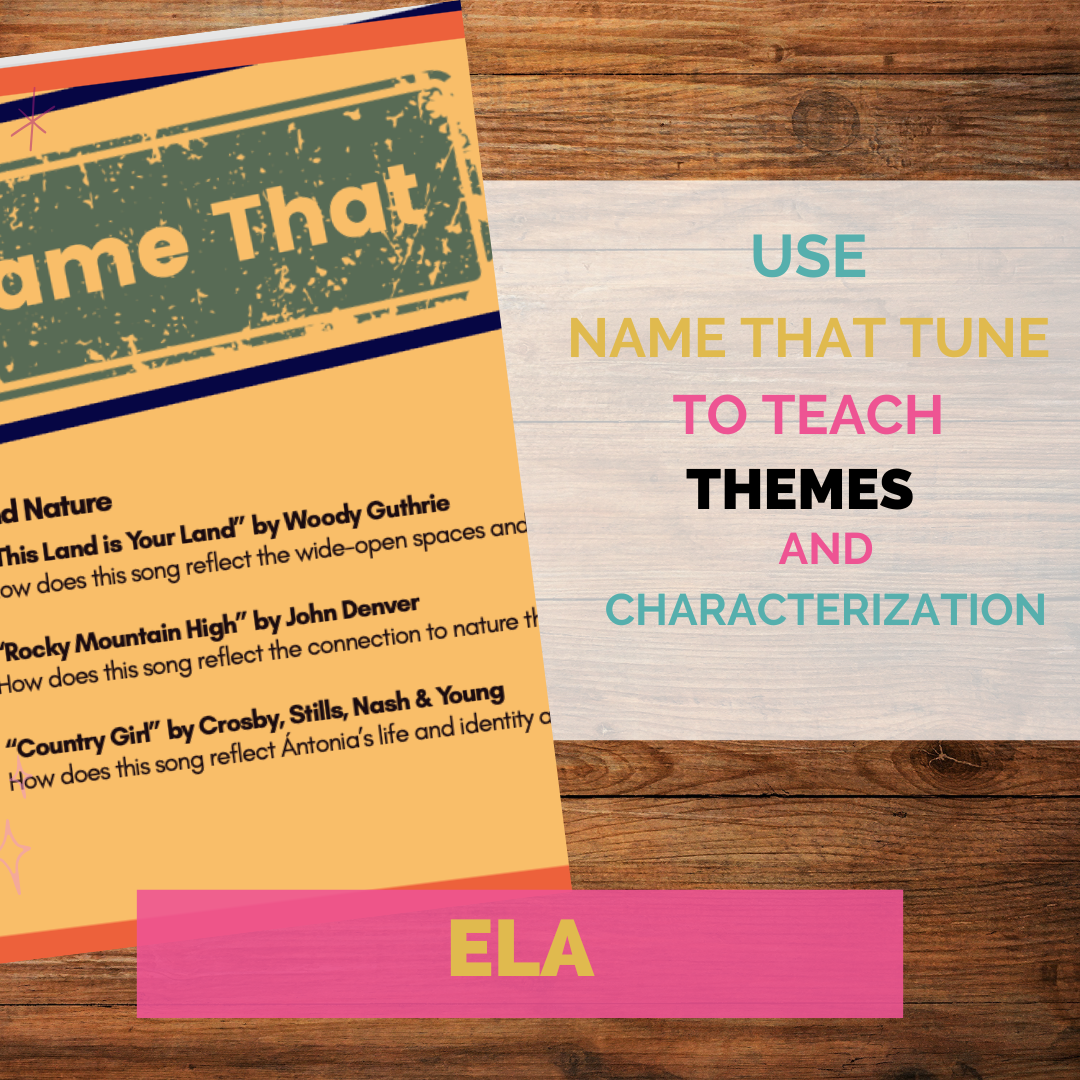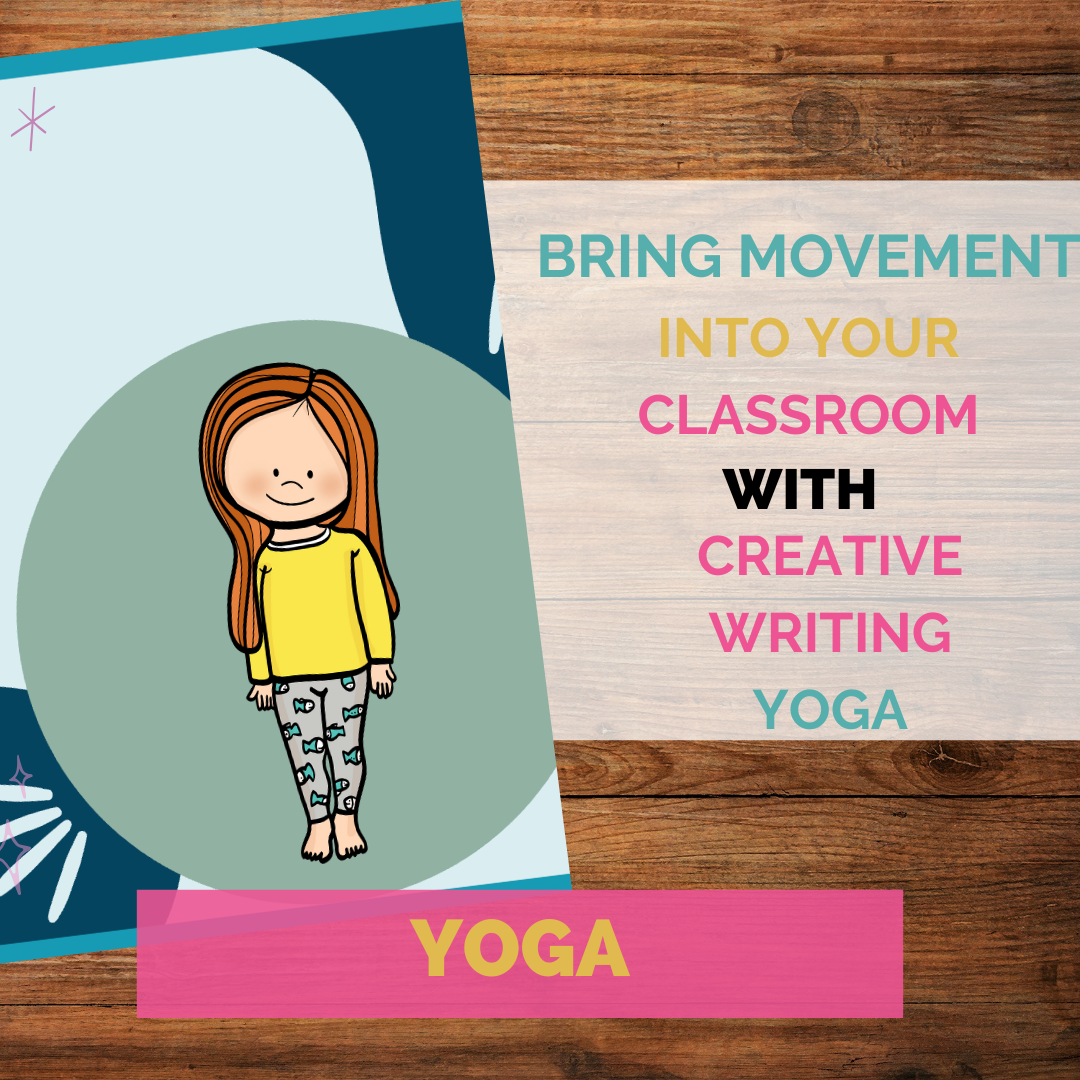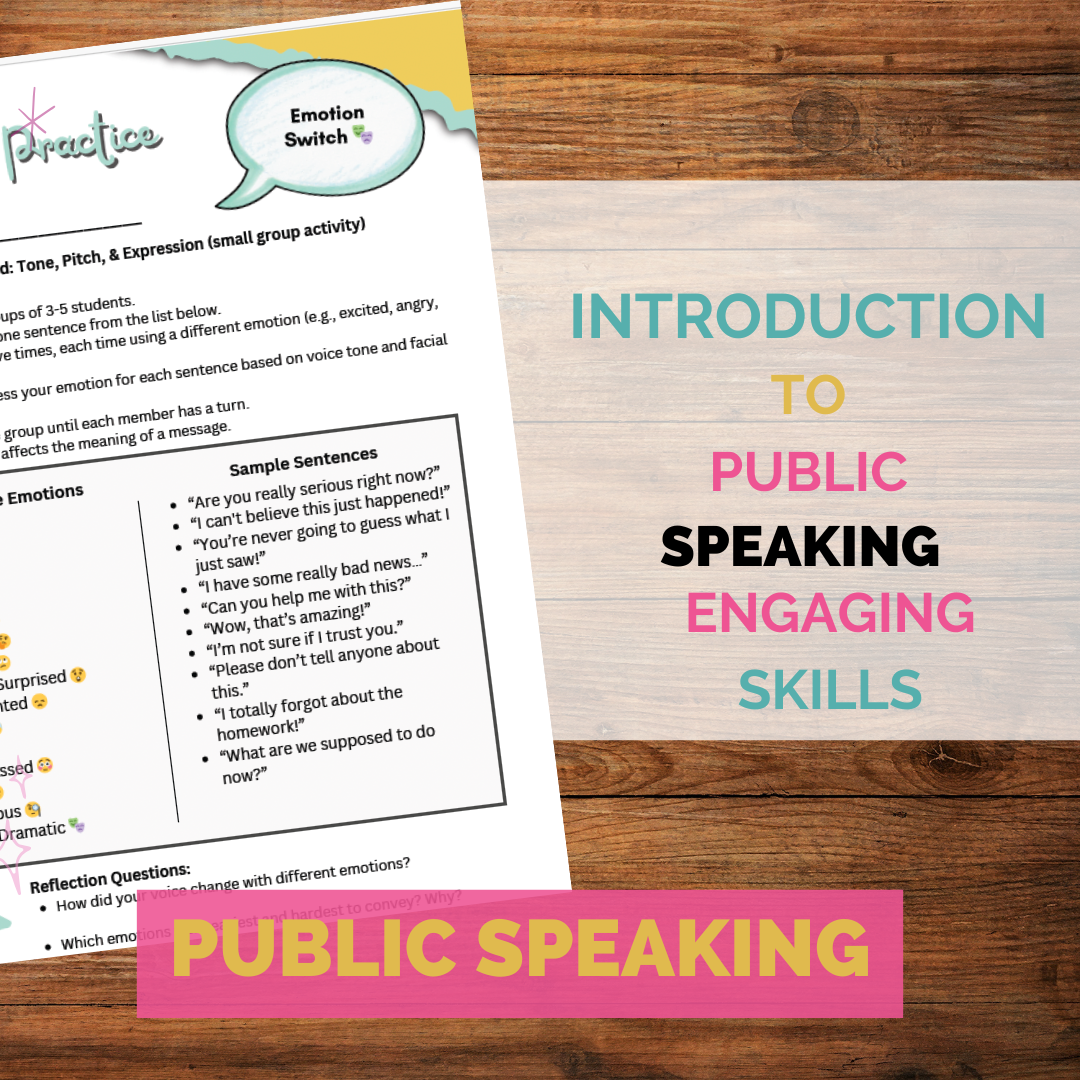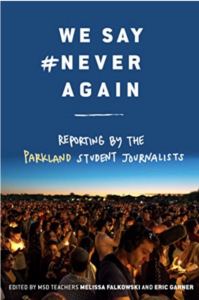
I have been searching for years to incorporate longer nonfiction pieces into my journalism class! A couple years ago, I found a great collection of titles to use in my journalism class that are engaging for students. My favorite are We Say #Never Again: Reporting by the Parkland Student Journalists and Tiger, meet my sister…and other things I probably shouldn’t have said.
I use We Say #Never Again as an introduction to my Student Press Law unit and I use Tiger, Meet My Sister as part of my editorial commentary and sports writing units.
Overview from Amazon
A journalistic look at the shooting at Marjory Stoneman Douglas High School in Parkland and the fight for gun control–as told by the student reporters for the school’s newspaper and TV station.
This timely and media-driven approach to the Parkland shooting, as reported by teens in the journalism and broadcasting programs and in the Marjory Stoneman Douglas newspaper, is an inside look at that tragic day and the events that followed that only they could tell.
It showcases how the teens have become media savvy and the skills they have learned and honed–harnessing social media, speaking to the press, and writing effective op-eds. Students will also share specific insight into what it has been like being approached by the press and how that has informed the way they interview their own subjects.
How I used We Say #Never Again in my classroom
Part I:
I divide up my instruction into 3 main parts to reflect the way the story is organized. Part I is chalked full of so many opportunities for engagement and investigation. In part I, I include 4 opportunities for students to interact with the text.
To start, I have all students read the introduction from the Eagle Eye newspaper advisor Melissa Falkowski to learn about the goals and considerations her students took into account when reporting on the shooting. They also read any vignette in part 1 so they could explore how the student journalists used their voice to positively impact their community.
Then, I have students read another vignette to investigate how students turned their hurt into activism and about how their activism impacted them as student journalists personally. Part I also includes so many powerful quotes and reflections from students. One exercise I have them do is select one quote from a list of quotes in part I and write a paragraph from the perspective of a fellow journalist on whether they agree or disagree with the statements. Also, I ask them to consider if they had a to see this student in person, what would they say.
Finally, there are many issues introduced in part I like gun violence, legislation around gun laws, and holding politicians accountable. I end part I with an argumentation activity called “Tug of War” where students have to take a position on an issue introduced in We Say Never Again and defend it with evidence presented in the book. This is great interactive exercise that really fosters critical thinking and develops persuasive writing and speaking skills.
Part II:
In part II, I provide students two opportunities to engage with the book. The focus shifts slightly and becomes more focused on individual stories and anecdotes of students and faculty at Parkland High School. The first activity I do with my students revolves around heroism in literary characteristics of a hero. They are asked to identify a single person references in the novel and explain how they think he/she demonstrated acts of heroism using evidence from the book.
Part II also includes so many powerful quotes and reflections from students. One exercise I have them do is select one quote from a list of quotes in part I and write a paragraph exploring the emotional and growth journey these student journalists when through during the aftermath of the shooting. They also explore how the students turned loss into hope.
Part III:
“There is always the need to carry on.” -MSD (1890-1998)
The final section of We Say #Never Again includes detailed suggestions, actions, and strategies for advocacy for students across the country. Students will select any idea or collection of ideas that inspires them and create a short action plan for any issue they feel passionate about and determine what action(s) they can take to evoke change.
The final exercise I ask students to do is to write a letter to the Parkland Students. If they were given the opportunity to speak to the Parkland High School Eagle Eye journalism students, journalist to journalist, what would they say?
All of these activities promote critical thinking as students consider their own role as a student journalist in covering major news events. It also fosters a sense of importance as they consider the impact of journalism in society. Each of the skills embedded in this short unit help promote academic writing, foster a sense of voice, develop persuasion skills, create empathy and explore activism on national issues like gun violence and gun control.
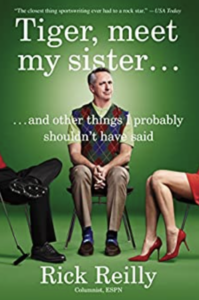
Another favorite nonfiction title I use is Tiger, meet my sister…and other things I probably shouldn’t have said. It’s a great resource for your sports lovers and your editorial and commentary writers.
If you are not able to purchase a class set of this collection, no worries! Nearly all of Reilly’s articles are archived here!
Overview from Amazon
In this hilariously funny essay collection, ESPN columnist Rick Reilly compiles the best of his sports columns—essays that include his expert opinion on athlete tattoos, NFL cheerleaders, and even running with the bulls in Pamplona.
Rick Reilly has no compunction telling readers, in his quick-witted style, how he really feels about some of the most popular sports figures of our time. Wondering about quarterback Jay Cutler? “Cutler is the kind of guy you just want to pick up and throw into a swimming pool, which is exactly what Peyton Manning and two linemen did one year at the Pro Bowl.” Or how about Tiger Woods? “Sometimes you wonder where Tiger Woods gets his public-relations advice. Gary Busey?”
But for every brazen takedown, Reilly has written a heartwarming story of the power of sports to heal the wounded and lift the downtrodden: the young Ravens fan with cancer who called the plays for a few—victorious—games in 2012, or the onetime top NFL recruit who was finally exonerated after serving five years for a crime he didn’t commit.
Whether he makes you laugh, cry, or just gets under your skin, Rick Reilly is sure to offer a unique and hilarious perspective on your favorite golf players, football teams, MVPs, and more.
Rick Reilly has been called “one of the funniest humans on the planet—an indescribable amalgam of Dave Barry, Jim Murray, and Lewis Grizzard, with the timing of Jay Leno and the wit of Johnny Carson” (Publishers Weekly).
How I used Tiger, meet my sister...and other things I probably shouldn't have said in my classroom
Starting the unit
When I begin this short commentary writing unit, I start off by introducing my students to journalist Rick Reilly who got his start at Sports Illustrated and later moved to ESPN.
USA Today called Reilly “the closest thing sportswriting ever had to a rock star.”
My students find his articles so fun to read because they recognize all of the high-profile athletes. They are hilarious and impactful.
I begin by walking students through the “building blocks” of a news story and compare and contrast that to the essentials of a commentary editorial. For example, we review the basic components of a news story: lead, nutgraph, facts, quotes and a conclusion. We introduce some additional components that make commentary writing unique: a clear purpose and direction, include rhetorical strategies, includes a deeper degree of research, and leaves readers with a take-home message.
I start by having students select an article from the first section FLAWS (If you are not able to purchase a class set of this collection, no worries! Nearly all of Reilly’s articles are archived here!). Students complete two exercises with this section that include an overview of the different components of a commentary pieces (i.e. lead, purpose/opinion, quotes and facts, conclusion and take-home message). Also, I incorporate a writing prompt on modeling. I have students practice using the skills and strategies of writing commentary by creating their own original writing sample.
Exploring the craft of commentary writing
Once students have a strong sense of organization and key features of a commentary piece, I spend time teaching style and language strategies like tone, rhetorical strategies, and literary devices. Often, commentary writing tends to include a great degree of descriptive language compared to traditional news writing.
In order to explore those language skills, I have students select an article from Fortitude (Small People Acting Big) or Family (Mine and Other People’s) and have them look for specific uses of tone, voice, literary strategies, and rhetorical approaches. Also, I encourage students to practice using those writing strategies by producing their own original piece of writing by responding to one of Reilly’s pieces.
Producing a commentary article
At the conclusion of this short unit, I have students create their own original piece of writing that incorporates skills we learned while reading Reilly’s commentary articles. Their stories should reflect key content: lead, nutgraph, research, clear purpose and take-away message. I also ask them to stretch themselves to include examples of tone and style, as well as intentional rhetorical strategies and literary devices.

